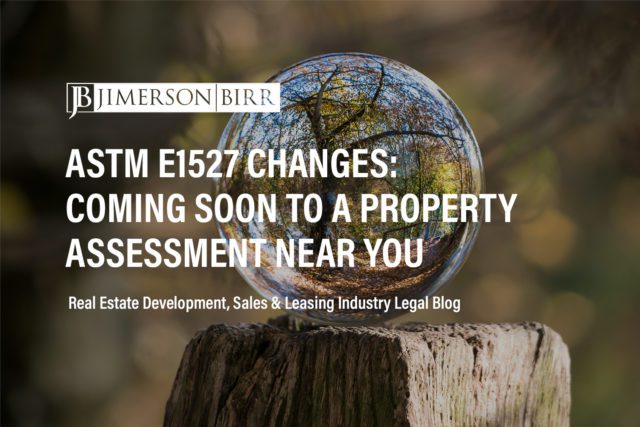What do environmental site assessments entail?
Environmental site assessments (ESAs) are a crucial aspect of environmental law in Florida. These assessments are in two phases: Phase I and Phase II. Phase I ESAs involve thoroughly reviewing a property’s ecological history to identify any potential contamination or hazards. It encompasses examining historical records, conducting site visits, and interviewing individuals with knowledge of the property. The goal is to identify recognized environmental conditions (RECs), which are instances of contamination or potential contamination.
When a Phase I ESA uncovers RECs, a Phase II ESA may be necessary. In this phase, the focus turns to sampling and testing the soil, groundwater, or other materials to determine the presence and extent of the contamination.
Need help regarding environmental due diligence, permitting, mitigation, or compliance? Schedule your consultation today with a top environmental law attorney.
In Florida, which laws and regulations apply to environmental site assessments?
Florida has various laws and regulations governing environmental site assessments and related mitigation efforts. The Florida Department of Environmental Protection (FDEP) is the primary state agency responsible for enforcing environmental laws and regulations.
One of the essential Florida regulations is the Florida Administrative Code (FAC) Chapter 62-780, which details the procedures for assessing and remediating contaminated sites. Additionally, the Florida Petroleum Restoration Program (PRP) under FAC Chapter 62-772 guides addressing contamination from petroleum storage systems.
At the federal level, the Comprehensive Environmental Response, Compensation, and Liability Act (CERCLA) outlines the process for assessing and remediating contaminated sites. In addition, the Environmental Protection Agency (EPA) establishes the All Appropriate Inquiries (AAI) Rule, which sets the standard for conducting Phase I ESAs.
What are common issues regarding environmental site assessments that lead to litigation?
Environmental site assessments (ESAs) are crucial in identifying potential environmental contamination at a property. However, disputes can arise when the ESA fails to uncover contamination or when a party disputes the extent or severity of the identified contamination. Below are some of the most common issues leading to litigation regarding environmental site assessments:
- Inadequate or incomplete site assessments: An incomplete or inadequate Phase I or Phase II site assessment can lead to undetected environmental hazards, which may result in environmental liability and lawsuits.
- Improper site characterization: Site characterization is critical in determining the extent and severity of environmental contamination. An incomplete or inaccurate site characterization can lead to disputes over the extent and severity of contamination and liability.
- Failure to comply with statutory and regulatory requirements: Parties can face legal action if they fail to comply with state and federal environmental statutes and regulations governing environmental site assessments.
- Inaccurate cost estimates: Environmental site assessments can be expensive, and a failure to accurately estimate costs can lead to disputes over who bears the cost of remediation and liability.
When a set of facts is appropriate for legal intervention, there are many paths a claimant may take. We are value-based attorneys at Jimerson Birr, which means we look at each action with our clients from the point of view of costs and benefits while reducing liability. Then, based on our client’s objectives, we chart a path to seek appropriate remedies.
To determine whether your unique situation may necessitate litigation, please contact our office to set up your initial consultation.
What claims about environmental site assessments do plaintiffs generally bring to court, and what are common legal defenses to those claims?
Common claims that plaintiffs bring to court include:
- Negligence: A plaintiff can claim that the responsible party acted negligently by failing to identify or adequately address contamination during the site assessment.
- Breach of contract: Parties can enter into agreements regarding the scope and performance of site assessments. A violation of those contracts can lead to claims for damages.
- Fraudulent Misrepresentations: A plaintiff can allege that the responsible party made false representations about the property’s environmental condition during the site assessment process.
- Statutory violations of environmental laws: If the law confers a private cause of action and a party exhausts any affiliated administrative remedies, they may claim damages under state or federal environmental laws if they believe the responsible party violated environmental laws or regulations during the site assessment process.
Common legal defenses to these claims include:
- Statute of limitations – Legal action must occur within a specific statutory period, and failure to do so can result in claims being barred by the statute of limitations.
- Lack of causation – A plaintiff must prove that the responsible party’s actions caused their harm.
- Assumption of risk – If the plaintiff knew or should have known about the environmental hazard, they may not recover damages.
- Contributory or comparative negligence – If the plaintiff contributed to the environmental contamination or harm, they may be barred from recovery or have their damages reduced.
Please contact our office to set up your initial consultation to see what actions or defenses may be available for your unique situation.
What are effective measures to minimize the risk of litigation over environmental site assessments?
Unfortunately, failing to perform or conduct environmental site assessments properly can result in significant ecological, legal, and financial consequences. Therefore, taking necessary measures to minimize the risk of litigation over environmental site assessments is essential.
Here are some practical measures to mitigate the risk of litigation over environmental site assessments:
- Hire with compliance in mind: Hire experienced and qualified environmental professionals to conduct the assessments, including a Phase I Environmental Site Assessment (ESA) and Phase II ESA, if necessary.
- Regulatory compliance: Ensure that the assessments comply with all relevant federal, state, and local environmental laws and regulations, such as the Comprehensive Environmental Response, Compensation, and Liability Act (CERCLA), the Resource Conservation and Recovery Act (RCRA), and the Clean Water Act (CWA).
- Establish processes for reporting risks: Address all potential environmental risks identified during the assessments, either by mitigating or remedying the issues or disclosing them to potential buyers or tenants.
- Strong training practices: Provide adequate training to employees, contractors, and vendors on environmental compliance and best practices to prevent environmental hazards and avoid potential liability.
- Adequate documentation: Document all environmental site assessment processes, findings, and actions taken, including disclosure of potential environmental hazards, to show that you took reasonable care and diligence to prevent ecological harm.
Frequently Asked Questions
- What is a Phase I Environmental Site Assessment, and why is it necessary?
A Phase I ESA is a preliminary investigation of a property’s environmental conditions and potential contamination. The assessment includes reviewing historical records, conducting interviews with current and previous property owners and occupants, and inspecting the property for any visible signs of environmental hazards. A Phase I ESA is necessary to identify potential environmental risks associated with the property and comply with federal and state environmental regulations, such as CERCLA and RCRA.
- What is the difference between a Phase I and II Environmental Site Assessment?
If the Phase I ESA identifies potential environmental hazards, a Phase II ESA may be necessary to investigate further and determine the extent of the contamination. A Phase II ESA involves taking soil and groundwater samples from the property to test for environmental hazards and assess the contamination’s impact.
- What are the consequences of failing to conduct an environmental site assessment?
Failing to conduct an environmental site assessment or conducting it improperly can result in significant legal and financial consequences, including fines, cleanup costs, liability for environmental harm, and reputational damage. Additionally, a failure to disclose potential ecological hazards can result in civil litigation by buyers or tenants who suffer harm due to the environmental hazards.
Have more questions about an environmental law-related situation?
Crucially, this overview of environmental site assessments does not begin to cover all the laws implicated by this issue or the factors that may compel the application of such laws. Every case is unique, and the laws can produce different outcomes depending on the individual circumstances.
Jimerson Birr attorneys guide our clients to help make informed decisions while ensuring their rights are respected and protected. Our lawyers are highly trained and experienced in the nuances of the law, so they can accurately interpret statutes and case law and holistically prepare individuals or companies for their legal endeavors. Through this intense personal investment and advocacy, our lawyers will help resolve the issue’s complicated legal problems efficiently and effectively.
Having a Jimerson Birr attorney on your side means securing a team of seasoned, multi-dimensional, cross-functional legal professionals. Whether it is a transaction, an operational issue, a regulatory challenge, or a contested legal predicament that may require court intervention, we remain tireless advocates at every step. Being a value-added law firm means putting the client at the forefront of everything we do. We use our experience to help our clients navigate even the most complex problems and come out the other side triumphant.
If you want to understand your case, the merits of your claim or defense, potential monetary awards, or the amount of exposure you face, you should speak with a qualified Jimerson Birr lawyer. Our experienced team of attorneys is here to help. Call Jimerson Birr at (904) 389-0050 or use the contact form to schedule a consultation.

We live by our 7 Superior Service Commitments
- Conferring Client-Defined Value
- Efficient and Cost-Effective
- Accessibility
- Delivering an Experience While Delivering Results
- Meaningful and Enduring Partnership
- Exceptional Communication Based Upon Listening
- Accountability to Goals









